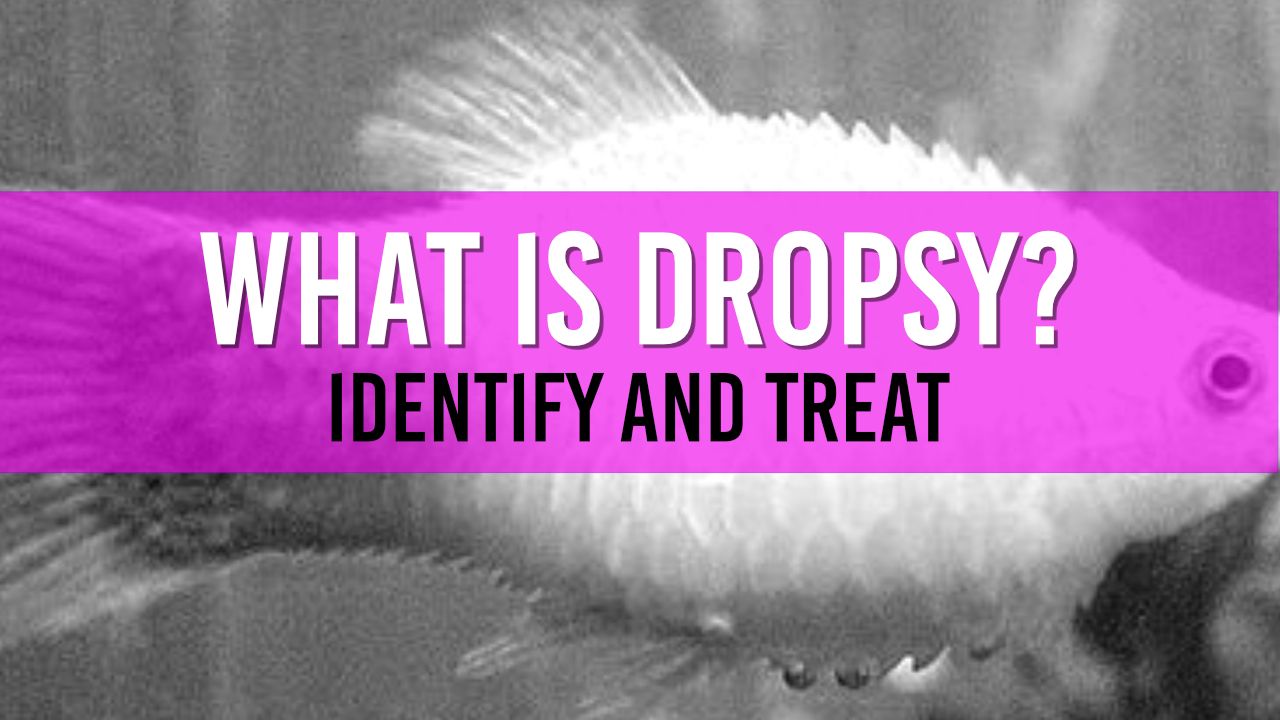What is Dropsy in Pond Fish?
Dropsy (also known as Pineconing) is a fairly common disease found in garden pond fish. The fish will show signs of swelling in the abdominal area and is often fatal. The best action is prevention by ensuring your pond water is healthy.

Table of Contents
Dropsy is a term often used to describe a symptom in fish, rather than a specific disease. It's commonly associated with a swollen or 'dropped' belly, hence the name. This condition is not exclusive to pond fish but can affect all types of fish, both freshwater and saltwater.

Understanding the root cause of dropsy is crucial to its prevention and management. At its core, dropsy is primarily caused by a bacterial infection in the fish's kidneys, often leading to fluid retention and swelling. The most common culprit behind such an infection is the Aeromonas bacteria. This harmful pathogen thrives in poor water conditions, making regular pond maintenance an essential factor in preventing dropsy.
Signs and Symptoms of Dropsy
Dropsy can be recognized by a series of symptoms, the most obvious of which is abdominal swelling. A fish affected by dropsy may appear bloated or 'puffy.' Other signs include:
- Lethargy
- Loss of appetite
- Rapid breathing
- Pale gills
Fish with advanced dropsy might also display pinecone-like scales due to fluid build-up as illustrated by the image above.
The prognosis for a fish with dropsy is generally poor, especially when symptoms are advanced. However, early detection and intervention can potentially save the fish and prevent the disease from spreading to others in the pond.
How to Prevent Dropsy
Good pond hygiene is the key to preventing dropsy. Regularly cleaning your pond filters, pump and removing waste such as uneaten food and fish waste can help maintain optimum water quality. Additionally, you should remove old food from your pond regularly and avoid overfeeding your fish. This not only helps to maintain water quality but also keeps your fish from becoming overweight, which can exacerbate dropsy symptoms.
Fish are more susceptible to bacterial infections when they are stressed. Therefore, it's important to provide a suitable environment that minimizes stress for your fish. Factors such as sudden changes in water temperature, poor oxygenation, overcrowding, and aggressive tank mates can all cause stress. Remember, a properly oxygenated pond is a healthy pond.
Keeping a close eye on your fish can also help with early detection of dropsy. Regular health checks can help you identify any changes in your fish's behavior or appearance. If your fish exhibit symptoms of dropsy or any other disease, it's important to act quickly. Quarantine the affected fish if possible, and consult a veterinarian or a fish health professional.
Treatment of Dropsy
The first step in treating dropsy is improving the water conditions. If the pond environment is the underlying cause of stress, correcting it will improve the fish's immune system and chances of recovery.
In addition, antibiotic treatments can be effective in combating the bacterial infection that causes dropsy. While it can be difficult to treat and not all fish will recover, some may respond to early intervention.
Does Bacteria Cause Dropsy in Pond Fish?
It's worth noting that the bacteria causing dropsy can be present in most pond environments, but it's typically only when the fish's immune system is compromised that an infection can take hold. Thus, boosting your fish's immunity plays an essential role in prevention. This can be achieved by providing a balanced diet, and choosing the right type of fish food is crucial for this.
When treating your pond, be sure to consider the entire ecosystem, including pond plants, other fish species, and even the pond liner. Be mindful when introducing new fish into your pond, as they can carry the Aeromonas bacteria. Always quarantine new arrivals to ensure they don't introduce potential infections.
Will a Pond UVC prevent Dropsy?
Another important factor in maintaining optimal pond health is the use of an effective UV lamp. The UV light emitted can help control harmful bacteria levels, reducing the likelihood of infections such as dropsy. However, regular maintenance of your UV lamp is required to ensure it's working effectively.
Do not underestimate the importance of water quality in preventing fish diseases. Poor water quality is often the root cause of stress for pond fish, leading to a weakened immune system and making them susceptible to diseases like dropsy. Regular water testing can help you ensure the water in your pond is safe and healthy for your fish.
Conclusion
Finally, it's important to remember that while dropsy is a serious and often fatal disease, it's also preventable. With good hygiene practices, regular health checks, and immediate action when symptoms are noticed, you can protect your fish from this harmful condition and ensure they live a healthy and happy life in your pond.

